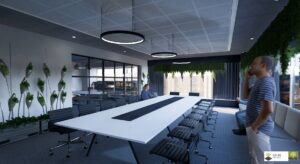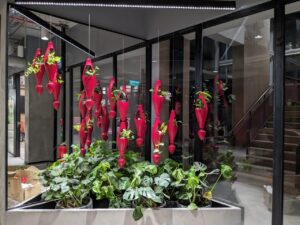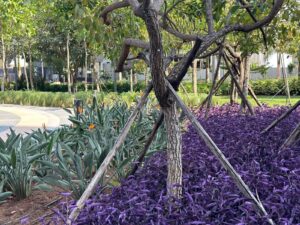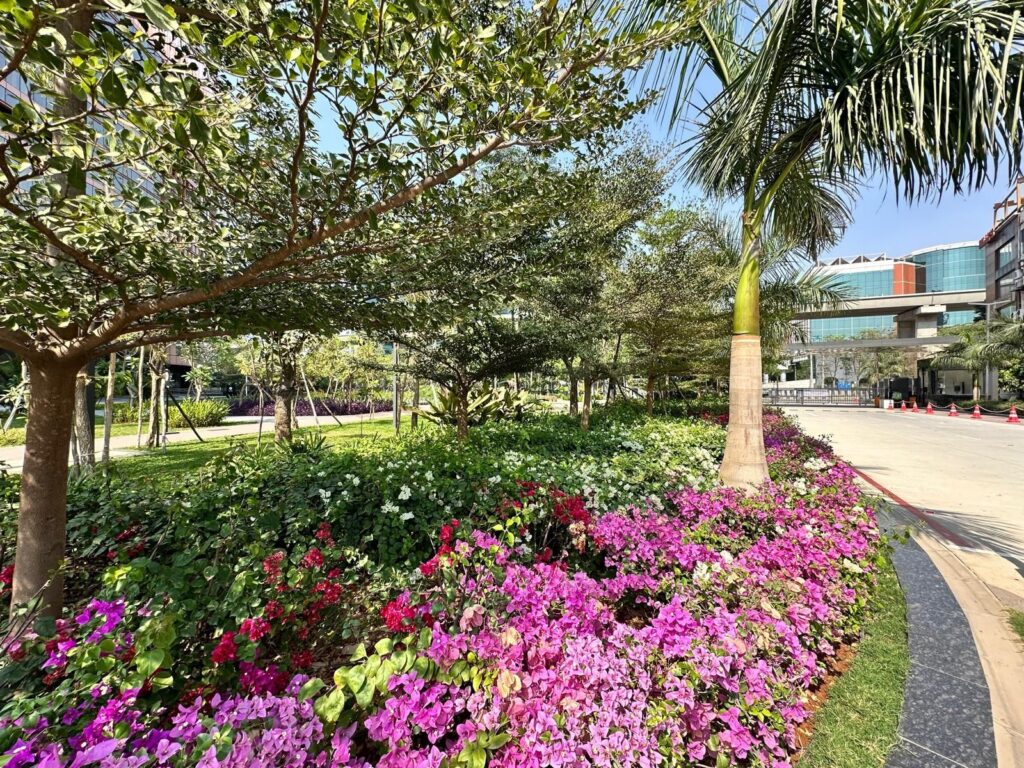Establishing the connection between humans and nature in creative and sustainable ways!
The world’s transforming into a concrete jungle, that’s why Biophilic architecture has become a whole new movement. Though urbanization proves to be a boon in many ways, it still leaves human souls longing for a soothing touch of Mother Nature.
The recent push to biophilic design emphasizes on the importance of sustainability rather than just designing for beauty and function.
A Brief History
Biophilia is a hypothesis, initially introduced by a psychologist Eric Fromm in 1964. It was later re-introduced by biologist Edward O. Wilson. He defined biophilia as the human impulse to connect with Nature and other living forms. He collaborated with Stephen Keller and identified the advantages of Biophilic design in the world of architecture in ‘The Biophilia Hypothesis (2008)’. Since then, the Biophilia hypothesis blossomed into what we see now – A hallmark of contemporary office design.
Outdoors are the natural habitat for humans. For a great span of time, humans have lived close to nature. Revolutionizing has contributed to the majority of time indoors. Staying indoors leads to the increased sense of disconnection among homo sapiens.
When it comes to interiors, Biophilia is all about incorporating natural elements like hanging indoor plants, water features, and framing a landscape picturesque of Mother Nature. For example – Including fish ponds, water walls, fountains, pools, skylights, floor-t0-ceiling windows or oversized sceneries of nature.
Biophilic design establishes a relation between shadow and light. Natural elements like plants, stone, wood, etc are used to eliminate the barrier between Mother Nature and human beings.

Examples of How Biophilia Improves Health
One of the most important lessons that we learned in life was in the pandemic. How important Nature is, the value was realized in the lockdown. Now, go back to the quarantine days. How did you feel trapped inside those sterile walls longing for a simple hike in Nature? Didn’t it magnify the feelings of loneliness and isolation?
This is just one example. Let’s talk about another.
Have you worked in a place where there’s no one around or an office with no windows? No matter how spacious or beautiful the space is, it feels more like a prison rather than plush? Isn’t it?
The Biophilic theory says that humans need connections in their lives in order to feel. Being alive means being creative, productive, centered and above all being happy.
Check out this study showing the impact of biophilic design on health and well-being. Read more about 12 Incredible Reasons Why Biophilic Design is a Bait For Nature Lovers.
Biophilic Design Elements Contributing to Better Human Health
Biophilic architecture promotes emotional, physical and intellectual well-being in humans. When biophilia is applied, patients heal faster, stress levels reduce, and creativity enhances.
Day Lightning
Spaces with natural light have a positive impact on human life. If used effectively, lightning can make employees more productive with less absenteeism. People practice clarity of mind, students do better in exams, and overall there’s more engagement in the air. Placing windows strategically throughout the space enhances human connection visually to the outdoors. For an efficient solution for the end user, day lighting principles must be effectively understood and implemented. It’s important to incorporate –
- Passive thermal control
- Shelf lights and lamps
- Using light color materials
- Light ceiling applications
- Clearstory windows
All of it helps to bounce natural light deep into space.

Color & Patterns
Using monochromatic shades and tones, vividly bright hues adds vibrancy in the surroundings. Colors enhance the beauty of the space and reconnects the user to the outdoors. It also boosts health and well-being physically and psychologically.
People tend to be less anxious, their heart rate and blood pressure is balanced and the concentration levels increase. There’s an improvement in mental health when receding hues of blues, purples, greens and numerous other neturals incorporated in our surroundings. That’s how a biophilic design approach adds to human well-being.

Living Architecture
Who doesn’t love hanging gardens, flowers and trees in their surroundings? We all do. For this, you need to understand that indoor plants aren’t just decorations. Inducing living architecture in our indoor space promotes indoor air quality and enhances the aesthetic perception of the interior environment. There’s a reduction in the thermal costs with carefully placed living architecture. The direct sunlight might cause glare and heat build-up, so biophilic design keeps all the cons in mind. Furthermore, greenery helps in the reduction of VOCs i.e. Volatile Organic Compounds.

Tune into the sensory world
The simplest way people connect to Mother Nature is through a sense of smell. This brings into trend the multisensory workplace design. So, now no more using artificial fragrances. As per a study, exposure to natural fragrances gives out psychophysiological effects. Biophilia helps you tune into the multisensory world. There would be sounds of water with small fountains, waterfalls, and some white noise for people to relax.
Add-on Greenery
Hanging gardens, indoor plants and greens add life to your space. Plus, they enhance workspace acoustics. Greens are responsible for improving indoor air quality that furthermore improves concentration and reduces mental fatigue. Plants and flowers are more than just decorations. To keep the environment more natural, using wood and stone is accustomed in Biophilia. Bringing the outdoors indoors is easy with the help of natural elements in your furniture. Nature isn’t only about views, it’s about texture too.

Biophilic designs and landscape architecture is much more than a quirky trend that’s only reserved for fashionable brands. It’s a very crucial trend that helps us fight mental health in the workplace and energizes you with divine energies whether at home or office.

It’s time to embrace biophilic design for a better way of working!
Find out more in What happens when we work in nature here and Is Biophilic Design A Trend or a Whole New Movement?
